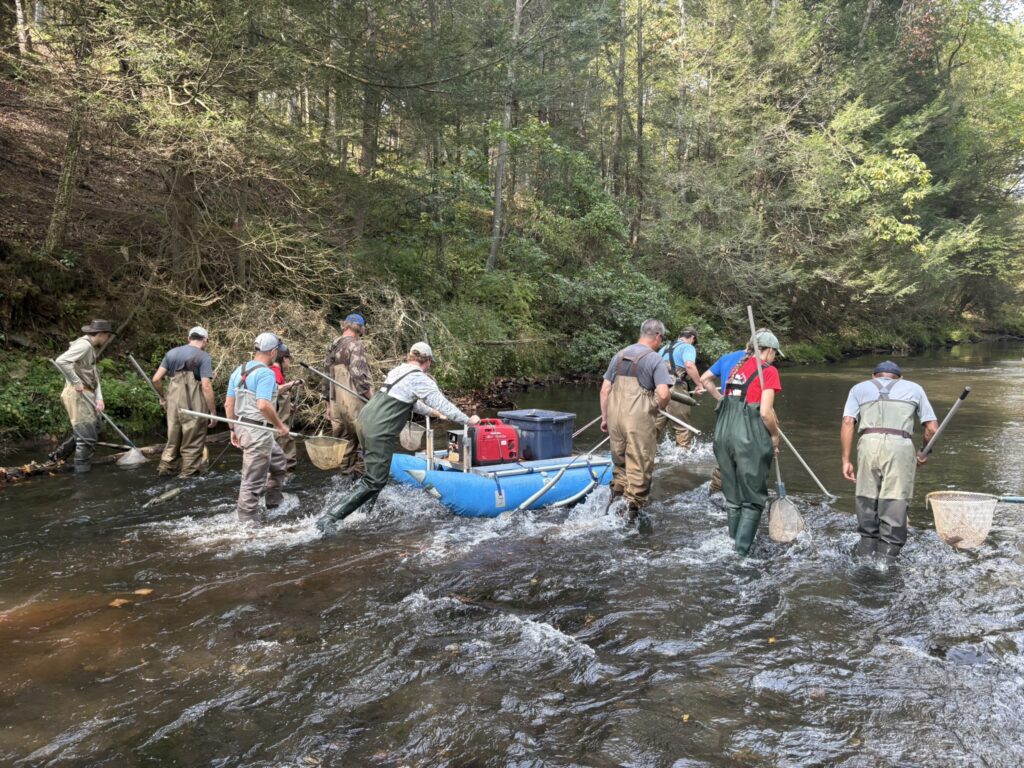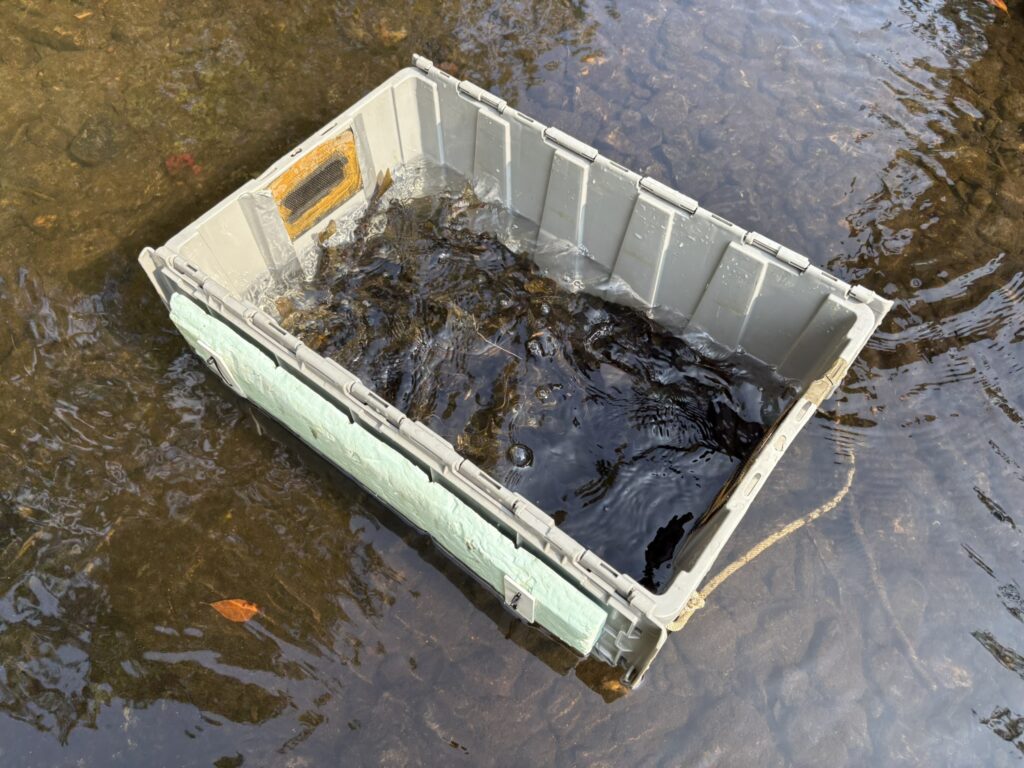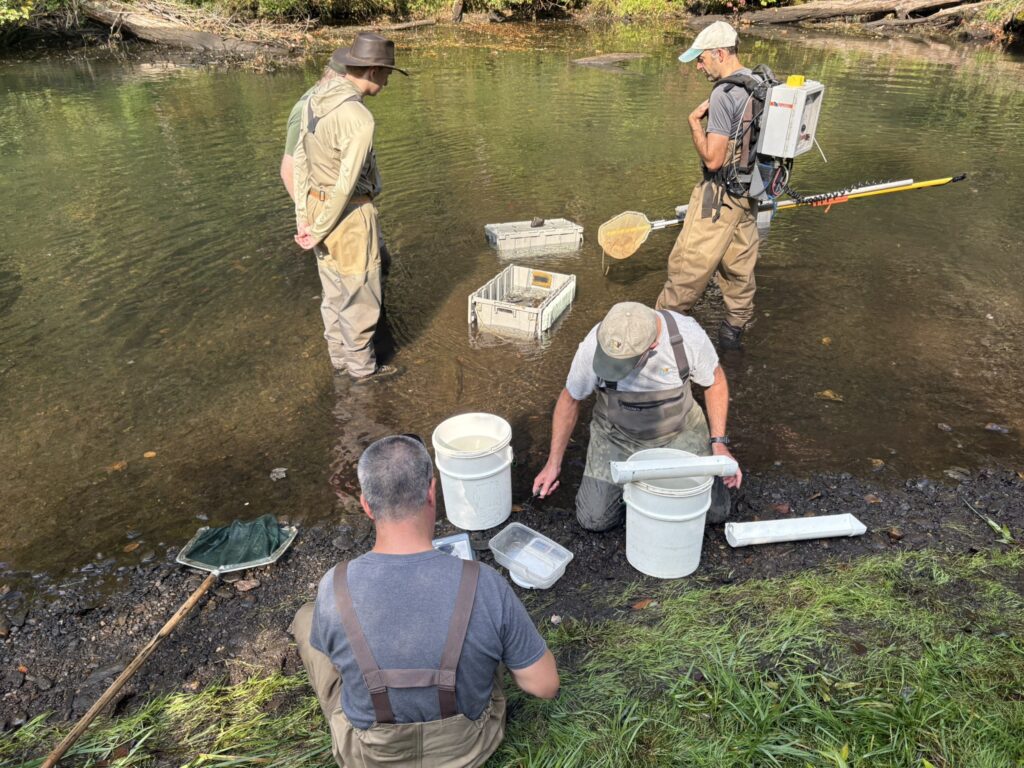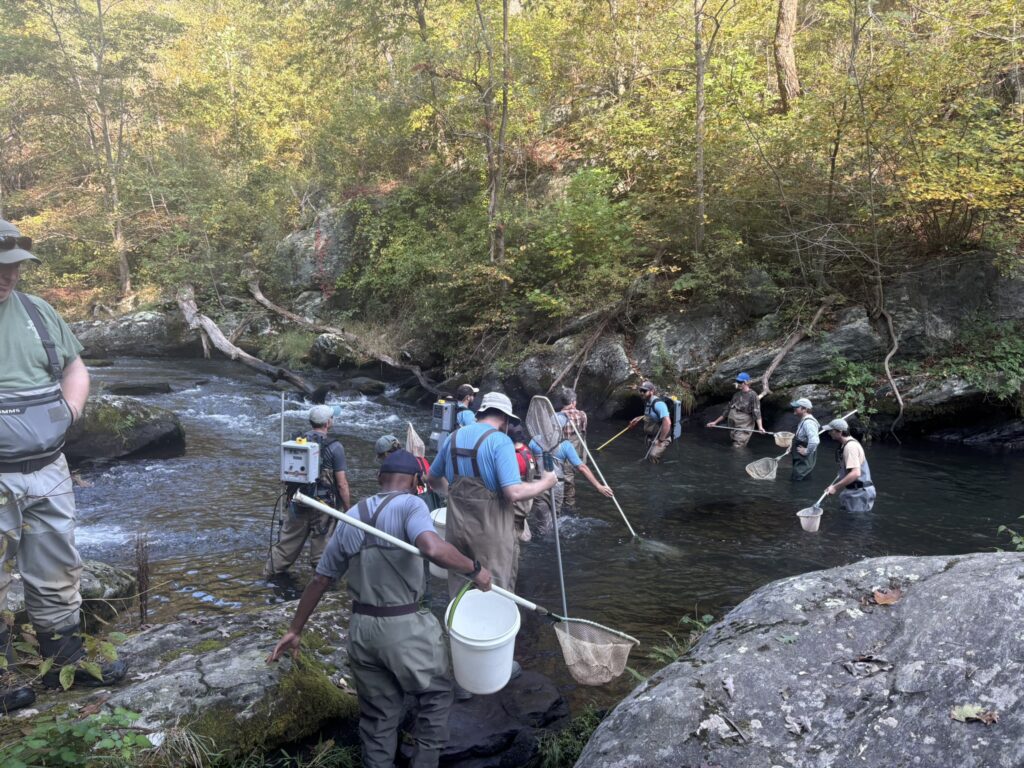The Maryland Department of Natural Resources (MDNR) Fisheries conducts an annual survey of Brown Trout in the Big Gunpowder Falls. Over a period of two days, three sections of the river are surveyed to help gain a better understanding of the trout populations and trends over time. To do so requires a team of staff and volunteers wading, sometimes chest deep, in the river to net fish temporarily paralyzed by the electrical current the team runs through the water.
To start, the water flowing from beneath Prettyboy Dam is reduced to a trickle. This allows the waders to maneuver in as little water as ever flows down the Gunpowder and forces the fish into strategic choke-points. Veteran MDNR staffers new which spots the fish liked to hide out, as these sections of river have been used for surveying for the past 30 years. Starting downriver and working their way against the current, surveyors guided a tote barge loaded with a generator, transformer, and reservoir for captured trout. Two crew members paved the way with anodes connected to the transformer passing electrical current through the water, incapacitating any fish in their field. Behind them a dozen netters stood at the ready to scoop up any fish, tossing the trout into the reservoir for study and releasing other fish back into the water, often with a disappointed mutter of, “sucker fish…”
Two passes were made over each stretch of river, after which all of the trout from each pass were carefully cataloged with weight, length, and any injuries or abnormalities of note. The total quantity of fish from the first and second passes, and the difference between the two passes, are used to calculate the overall density and health of trout populations in the river.
Over the course of the two-day survey, Gunpowder RIVERKEEPER Theaux Le Gardeur and staffers Brady Bayne and Joe Ottomano were on-site and in-river to help with the netting. A grand time was had by all.




